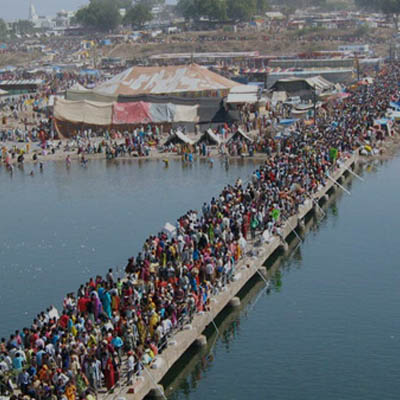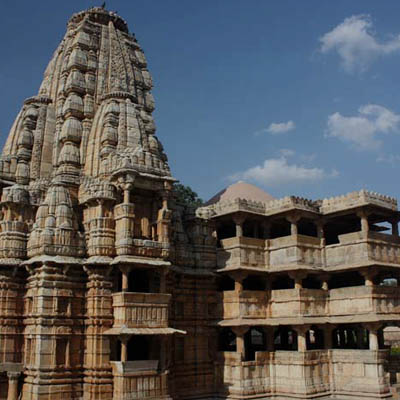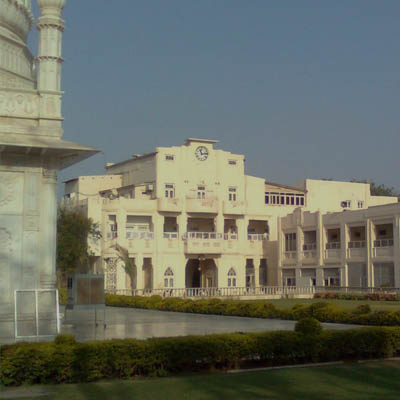Dungarpur
BARODA: Baroda village, once the capital of Vagad, is situated at a distance of 41km by road from Dungarpur and lies in Aspur tehsil. In Aspur proper also, there are a number of beautiful temples. Baroda village is famous for the ruins of temples of old Rajput architecture. Saivism and Jainism were the main religions of this place in the early times. Near the tank in Baroda village, there is a beautiful, old Shiva's temple made of white stones. Near the temple is a 'kundli' bearing an inscription of Samwat 1349 of the times of Maharaj Shri Veer Singh Dev. In the heart of this village lies an old Jain temple. The principal idol in the temple is that of Parshvanath which was identified in Samwat 1904 by Bhattarak Devendra Suri.
BENESHWAR: The Beneshwar temple containing the most reverend Shiva Linga of the area is situated on a delta formed at the confluenced of Som and Mahi rivers, about one and a half km from Nawa Tapra village. Sabla is the nearest bus stand located at a distance of about 7 km from the temple on Udaipur-Banswara-Dungarpur bus route. Sabla is at a distance of 123 km from Udaipur, 53 km from Banswara,45 km from Dungarpur and 22 km from Aspur. The tribal in character, a fair at the temple is held during Magh shukla Ekadashi to Magh Shukla Purnima. Just near the Beneshwar temple is the Vishnu temple which was reportedly constructed in Samwat 1850 (1793A.D.).


BORESHWAR: The temple of Boreshwar Mahadeo is situated at a distance of 83 km from Dungarpur near village Solaj in Aspur tehsil and belongs to 1179 A.D.
BHUVANESHWAR: There is a Shiva temple which is situated at a distance of 9 km from Dungarpur on the road side near Kanba village in Dungarpur tehsil.
DEO SOMNATH: Deo Gaon is situated at a distance of 24 km from Dungarpur in the north-east. On the banks of Som river, there is an old and beautiful Shiva temple, Deo Somnath. The temple is believed to have been built sometime in the 12th century of Vikram Samwat. Built in white stone, the temple has imposing currants. It gives an impression of the antiquity. There are several inscriptions in the temple.
DUNGARPUR TOWN: The town of Dungarpur was founded in 1335 A.D. There are temples erected by Rawal Veer Singh, in the memory of Dungaria's widows. On the hill, there is also a small fortress where Maharawal Bijai Singh built a place called Bijaigarh, which overlooks a lake. In the east of the town, there is Udai Bilas Place, named after Udai Singh II, surrounded by hills and enclosed by a small lake. Dungarpur town presents a picturesque appearance.
GALIAKOT: Situated on the bank of Mahi river Galiakot village is located 58 km towards the south-east of Dungarpur. The nearest town of Sagwara lies at a distance of 19 km. According to the tradition, Galiakot derives its name from a Bhil Chieftain, who ruled the area. It was once the capital of the parmars and also of the erstwhile Dungarpur State.
The relics of an old fort can still be seen. The village owes its renown to the shrine of Syed Fakhruddin. it is visited by thousands of Dawoodi Bohara devotees who gather here from all over the country at the time of annual ' Urs' which is held from the 27th day of Muhharram, the first month of Mohammedan year. Syed Fakhruddin was a highly religious man. He was widely known for his learning and saintliness. In the course of his wandering, he died at Galiakot village and was buried there.
Besides these places of religious and historical importance there are in the district, other places like Modhpur having Vijia Mata's Temple, poonjpur, Sagwara having 'Yati-ji-Chatri' and Vasundhara having an ancient Vasundhara Devi Temple.

